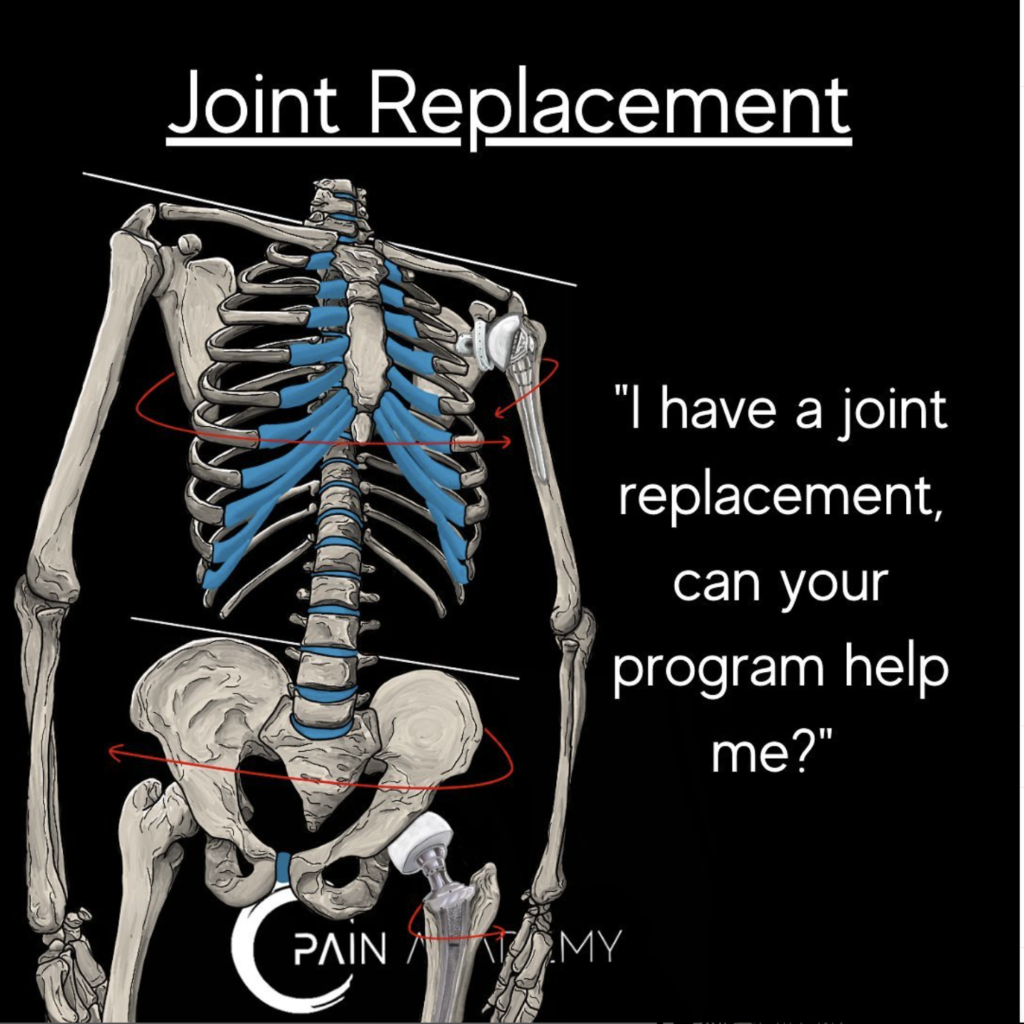
Yes.
Why?
If you had a joint replaced, chances are the original muscle dysfunction around that joint is still there. A joint can be replaced, but the underlying movement problem that likely led to the erosion of cartilage still exists after surgery.
There is also the rest of your body that could use some help as well. Years leading up to the joint degeneration, your body learned to move and compensate in many ways so you can avoid painful movement and get through the day. Those adaptive movement patterns, although helpful when in pain, can create problems elsewhere.
Maybe your hip twisted externally more when you walked or stood to avoid bone-on-bone contact. Maybe one side of your pelvis hiked up and one shoulder elevated to lessen the pressure on a diseased knee or hip joint. Maybe the upper body twisted up and counter-rotated to protect and safeguard movement.
Sometimes just replacing the joint can help unwind those adaptive patterns because the body no longer needs to compensate, but for many people, the body holds on to these compensatory patterns long after the joint is replaced. What was once a helpful adaptation to get you through a painful experience with a joint, can now be maladaptive leading to a degeneration of other joints prematurely.
This is where my online movement program comes in. Regardless of which joint was replaced, or even if you’re due for a replacement, there is work to be done and benefits to be gained by improving muscle function and joint movement body-wide.
Having a joint replacement means you were also given restrictions on what you can and can’t do until you fully heal. If you just had surgery, stick with your surgeon guidelines until you are fully healed (usually 4-12 weeks). Once healed, most restrictions are lowered and more options for movement and exercise are available.
The majority of exercises in our program (called The Movement Program) are available to you and will be massively beneficial for improving movement and restoring muscle balance. I absolutely encourage you to sign up. The first step is grabbing The Pain Assessment Toolkit, found in the link in my bio.
(If you have any questions about a particular exercise, reach out to us and consult your surgeon for guidance.)
Also, another great resources can be found below:
CRAWFORD RW, MURRAY DW Total hip replacement: indications for surgery and risk factors for failure Annals of the Rheumatic Diseases 1997;56:455-457.